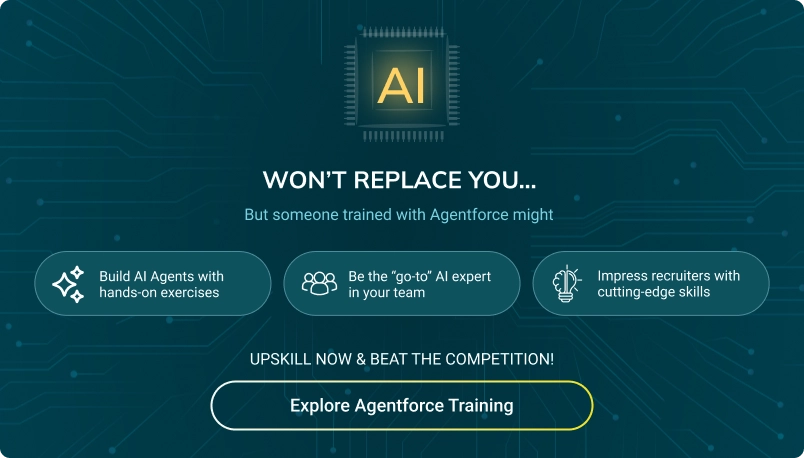Table of Contents
As a business analyst, collecting requirements is the major task you are required to perform. This task includes identifying, managing, and documenting the stakeholder needs while ensuring that the project matches the company’s goals. Gathering the business analyst requirements effectively supports the project like a solid base and reduces future conflicts and misunderstandings. This process is essential to ensure the final product meets the user’s expectations.
There are several steps involved in gathering these requirements, but in this guide, we will provide you with steps to do this job efficiently. Whether you are just starting out or already working as a professional, this guide will help you to simplify this process step by step.
Key Takeaways
- Use multiple elicitation techniques (like interviews, workshops, and surveys) to gather comprehensive and accurate requirements.
- Prioritize clarity and validation by documenting, refining, and confirming requirements with stakeholders regularly.
- Adapt to evolving needs by maintaining flexibility and encouraging continuous feedback throughout the project lifecycle.
How to Gather Requirements As a Business Analyst?
As a business analyst, you should perform the following steps to gather an organization’s business requirements.
1. Understanding the project scope
It is necessary to understand the scope of the project before you start collecting the requirements. When you know the scope, you will obtain the proper business analyst requirements to prevent project delays or scope creep.
Steps to Understand the Scope:
- Study project documents: Study the project charters, scope statements or other documentation created for a project’s objectives.
- Introduce critical stakeholders: In this step, you engage with your sponsor or project manager to discuss high-level objectives so that you know what is in and out.
- Previous Knowledge of Past Projects
A good knowledge of scope keeps you in line with your business analyst job requirements and ensures that focused, relevant information is gathered.
2. Identify Key Stakeholders
It would be best for you to identify the key stakeholders because the right people to talk add valuable information concerning what must be done. It means knowing who to involve and how best to manage their expectations, among other things that characterize the competencies of the business analyst.
Guidelines to Identify Stakeholders:
- Development of a stakeholder list: All the stakeholders should be marked; this often involves clients and end-users, project sponsors, or technical teams.
- Prioritize influence: Only involve the influencers/deciders and those individuals whose decisions will most significantly impact your project.
- Engage early: After identifying them, contact and explain your role and how you will contribute to the Business System Life Cycle.
Engaging the right stakeholders early in the process ensures that all voices are considered so that you will get the proper requirements.
Read More:
What Is a Salesforce Business Analyst and How Do You Become One?
3. Use a Variety of Requirements Gathering Techniques
Different stakeholders may communicate differently, and the project complexity often demands various techniques for gathering requirements. The requirements for business analysts involve being adaptable in your approach to gathering detailed and accurate information.
1. Interviews
Interviews allow you to explore stakeholders’ needs in-depth. This method works well when the project involves detailed, complex requirements.
Interview Tips
- Ask close-ended questions to get solutions instantly.
- Listen carefully and clarify when needed.
- Take thorough notes for documentation later.
2. Workshops
Workshops encourage collaboration among stakeholders and help clarify requirements while brainstorming solutions.
Workshop Best Practices
- Set clear objectives before the session.
- Use facilitators to keep discussions on track.
- Ensure every stakeholder participates.
3. Surveys and Questionnaires
For large groups or dispersed teams, surveys and questionnaires provide a way to gather feedback quickly. These are particularly useful for gathering high-level requirements or validating assumptions.
Survey Tips
- Keep questions focused and straightforward.
- Ask close-ended questions for clarity.
- Anonymize responses if necessary to encourage honesty.
4. Document Analysis
Document analysis is a systematic method used to evaluate various types of documents to extract valuable insights and information. This technique is essential in fields such as research, business analysis, and qualitative studies.
Existing documentation like process maps, business cases, or previous project plans can offer valuable insights into current processes and where improvements are needed.
Document Analysis Tips
- Look for gaps or inefficiencies in current systems.
- Gather Relevant Documents
- Compare stakeholder input with documented processes to identify discrepancies.
- Define Objectives and Research Questions
- Conduct Initial Review
- Analyze Content
- Identify Inconsistencies or Gaps
- Compile Findings into a Report
Using a mix of these techniques ensures that you gather thorough and accurate business analyst requirements from all necessary perspectives.
4. Ask the Right Questions
The quality of the information you gather depends on asking the right questions. As a business analyst, you must dive deep into stakeholder needs while considering the big picture.
Key Questions to Ask:
- What’s the business process?
- How leads are getting generated?
- What systems and tools are currently in use, and how do they work together?
- How does data flow between different departments or systems?
- What problems are faced by the user over the business process?
- What are the project’s primary business goals?
- Are there any constraints like timeline or technology?
- What pain points exist with the current system?
The ability to ask detailed and straightforward questions is a core part of the skills required for business analysts. This ensures you get all the necessary details from stakeholders.
5. Document Requirements Clearly
Documenting requirements accurately is one of the key business analyst job requirements. Clear documentation avoids confusion and ensures everyone is on the same page.
Tips for Documenting Requirements:
- Use simple language: Avoid jargon and ensure all stakeholders understand what’s being documented.
- Categorize requirements: Group related requirements into functional, non-functional, and technical sections to keep everything organized.
- Use visuals: Diagrams, flowcharts, and wireframes can help stakeholders visualize processes and requirements.
- Prioritize needs: Work with stakeholders to categorize requirements by importance (e.g., must-have, nice-to-have).
- Create a single placeholder to put all documents together for future reference.
- Types of documents like – SOW, BRD, Estimation etc.
- Whiteboarding can be done, flows can be prepared for better understanding. It also helps both parties to get along over the same requirements.
Well-documented requirements are critical to the Business System Life Cycle, helping teams develop solutions that meet user needs.
6. Validation and Verification of Requirements
Now that the requirements have been written down, it’s high time to validate them with the people involved so that the requirements are complete and correct.
How to Validate Requirements?
- Schedule meetings: Schedule a meeting with stakeholders so that they go through the requirements documented to match what is expected.
- Prototypes or mock-ups: One can present a prototypical perspective or mock-ups to give stakeholders a better feel for the proposed.
- Get formal approval: Get the stakeholders to sign off on the final requirements, agreeing to accept and embrace the project.
This step ensures that you can meet all business analyst requirements, thus ensuring that stakeholders’ trust and collaboration are sustained.
7. Manage Changeable Requirements
New requirements may arise during the Business System Life Cycle, or some will change. Effective management of change is indispensable for keeping the project on track.
Tips on Managing Changes in Requirements
- Develop a change control process: Prepare a formal procedure for reviewing and approving requests to change requirements.
- Inform of changes immediately: Inform all the stakeholders of the implications of change on scope, timeline, or cost.
- Documentation of change: Ensure that changes are documented in the requirements documentation to avoid ambiguity. Change in requirements is necessary for a project to accommodate business objectives but keep scope active.
- Change Request: Any change that significantly alters the scope by pricing or by timeline should be considered as CR(Change Request) and needs formal sign-off before proceeding.

Summing Up
Lastly, gathering business analyst requirements is a task that demands multiple skills at once. To understand the needs of stakeholders, a Salesforce business analyst must have technical expertise, solid communication skills, and effective planning techniques.
It would also help if you noted that the requirements for business analysts continue after the first data collection procedure. You must examine and update your documentation daily to ensure the project stays on schedule. Following the guidelines outlined above, you can gather the business analyst job requirements and be a valuable asset to your company. Also, if you are new to the Salesforce ecosystem, you can explore our expert-led Salesforce business analyst training to excel in your BA career.
Join our newsletter: Get daily update on Salesforce career insights & news!
Join Now!

















